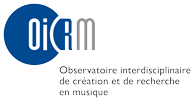According to Le Petit Robert, the use of the word audience [“public”] in reference to “a group of people in contact with a work (literary, artistic, musical), a performance, [or] media” emerged in the 17th century. Sociologists consider the concept quite unstable, which explains the breadth of the definition. It is impossible to define an audience as such because it only exists insofar as there is something to read, to see, or to hear. [1] The definition of an audience must consider not only the object of its attention, but also the means of its comprehension (musicological, sociological, economic). What is more, the only common denominators being, for example, the venue, the moment, or the performance, one cannot speak of an audience as a homogenous entity. [2]
Within the DMAQ, the concept of the audience is limited to those people actually present at a concert. Musical audiences can be treated as a kind of temporary community [3] possessing specific, but not permanent, characteristics. The challenge for artists and musical organizations is to sustain the connection with this temporary community that is established through its musical activities despite the fact that it is continuously in flux.
[1] Esquenazi, Jean-Pierre, 2009, Sociologie des publics. Paris : La découverte, p. 3.
[2] Botrel, Jean-François, Salaün, Serge et Françoise Étienvre, 2009, « Pratiques culturelles dans l’Espagne contemporaine : des masses à l’individu », in La réception des cultures de masse et des cultures populaires en Espagne : XVIIIe-XXesiècles, Salaün S. et F. Etienvre (eds). Paris, p.4-39. [disponible sur Internet http://crec-paris3.fr/wp-content/uploads/2011/07/actes-01-Intro.pdf]
[3] Sorlin, Pierre, 1992, « Le mirage du public », La revue d’histoire moderne et contemporaine, 39, p. 91.
« Retour au lexique







